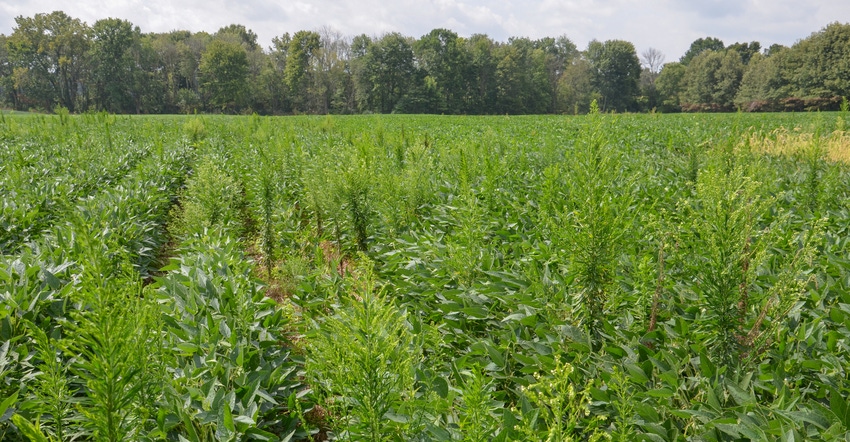
My friend showed me his soybean field a month after no-tilling into a clean stalk field. It was clean as a whistle. He sprayed herbicides last fall. He wants to spray every acre this year. Was last year unusual, or are fall herbicides a good deal? If so, what should I apply for fields going to soybeans in ’18?
The Indiana Certified Crop Adviser panel answering this question includes Betsy Bower, agronomist with Ceres Solutions, Terre Haute; Jamie Bultemeier, agronomist and corporate sales manager for A&L Great Lakes Labs, Fort Wayne; and Steve Gauck, sales agronomist with Beck’s, Greensburg.
Bower: Fall herbicides certainly can be a great fit for weed control for a no-till system, especially for marestail and winter annuals. If you have the weather to spray, it’s a great and typically inexpensive investment in weed control that can pay large dividends next spring.
If marestail is your problem, then products that contain dicamba labeled for fall weed control are a necessity to control marestail through mid to late spring. The dicamba products should be paired with 2,4-D and glyphosate at a minimum, and should be applied no earlier than Oct. 15 up till the ground freezes. Even as we get into late fall and cooler conditions, we can still get some good spraying hours during the day. Remember, time is on our side regarding killing a weed going into cold conditions. You can rotate this program to corn or soybeans.
Pair dicamba, 2,4-D and glyphosate with soil residuals like metribuzin in products labeled for fall use or Canopy EX. These products allow you to start earlier in the fall for dimetric additions, and anytime after soybean harvest for Canopy EX. Corn or soybeans can still be planted after dimetric, but only soybeans can be planted after Canopy EX.
Consult your local crops professional for rates and adjuvants that should be included.
Bultemeier: Fall applications are key when fighting tough biannual and perennial weeds. When taking a multiyear approach to controlling dandelions, thistle and marestail, a fall herbicide application will greatly reduce these plants’ ability to become established before the soybean canopy closes next summer. The most effective fall applications are focused around products with soil residual activity. Often, 2,4-D and glyphosate are included to control actively growing weeds.
Gauck: Fall herbicide programs will not be a fit for everyone, but in many cases they can offer some benefits. Fall herbicide programs can also vary, depending on what you want to accomplish. They’re great for controlling dandelions and Canada thistles. We have also seen where a fall program can help marestail control the following season, because you eliminate the fall-emerging marestail.
A fall program can give you a cleaner, warmer field in the spring to plant into, and many times it will have reduced insect pressure.
You can use residuals or just a contact herbicide in the fall. The most popular seems to be glyphosate and 2,4-D. These alone normally will not keep the fields clean until a month after planting. Plan on using a residual at planting the next year to optimize weed control.
Also, if you plan to use a residual product, be sure you do not have plans to change your crop rotation. Applying residuals in the fall will limit what you can plant next spring. Fall herbicides would not be a good program with fields that are easily eroded.
About the Author(s)
You May Also Like




